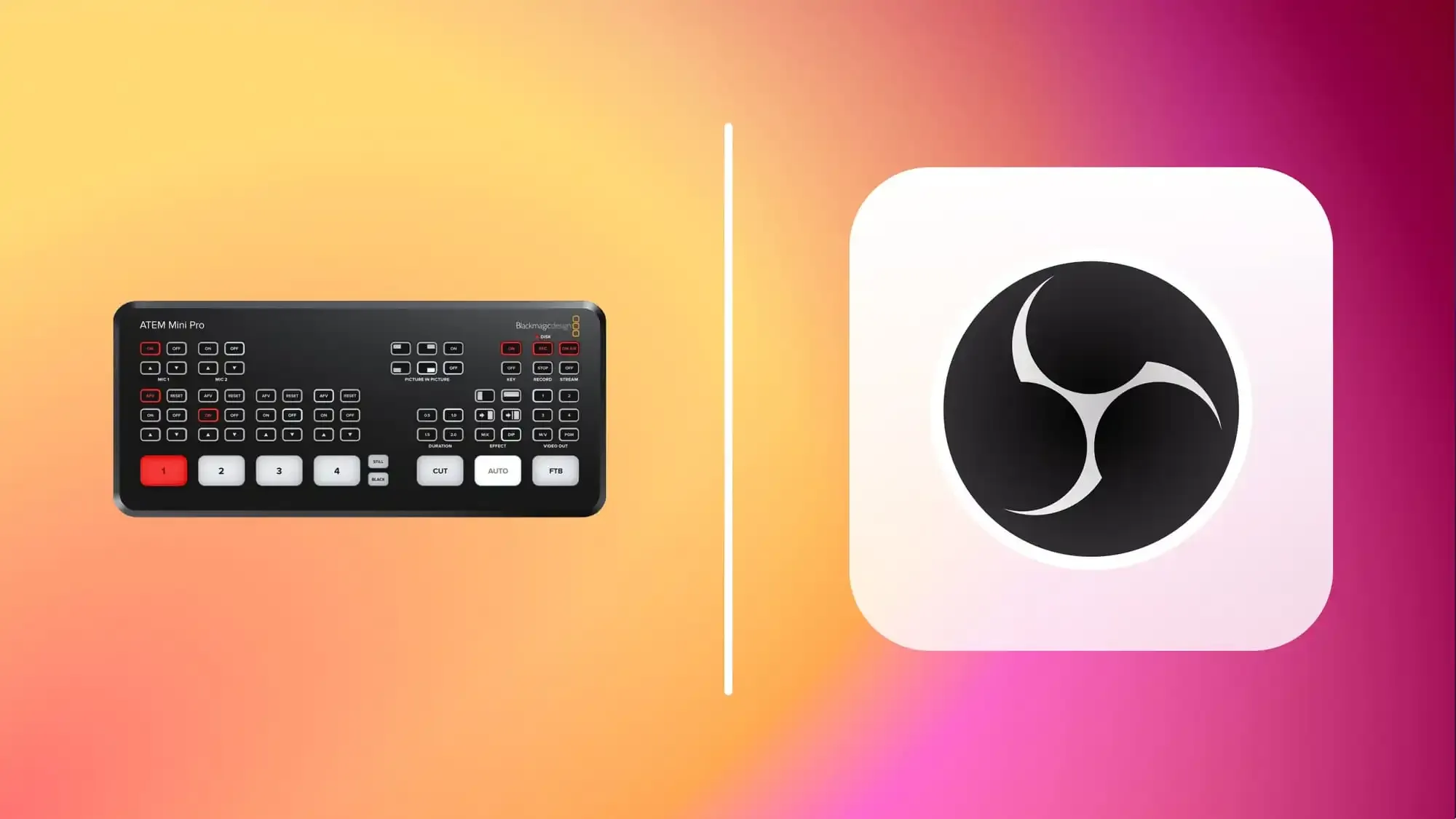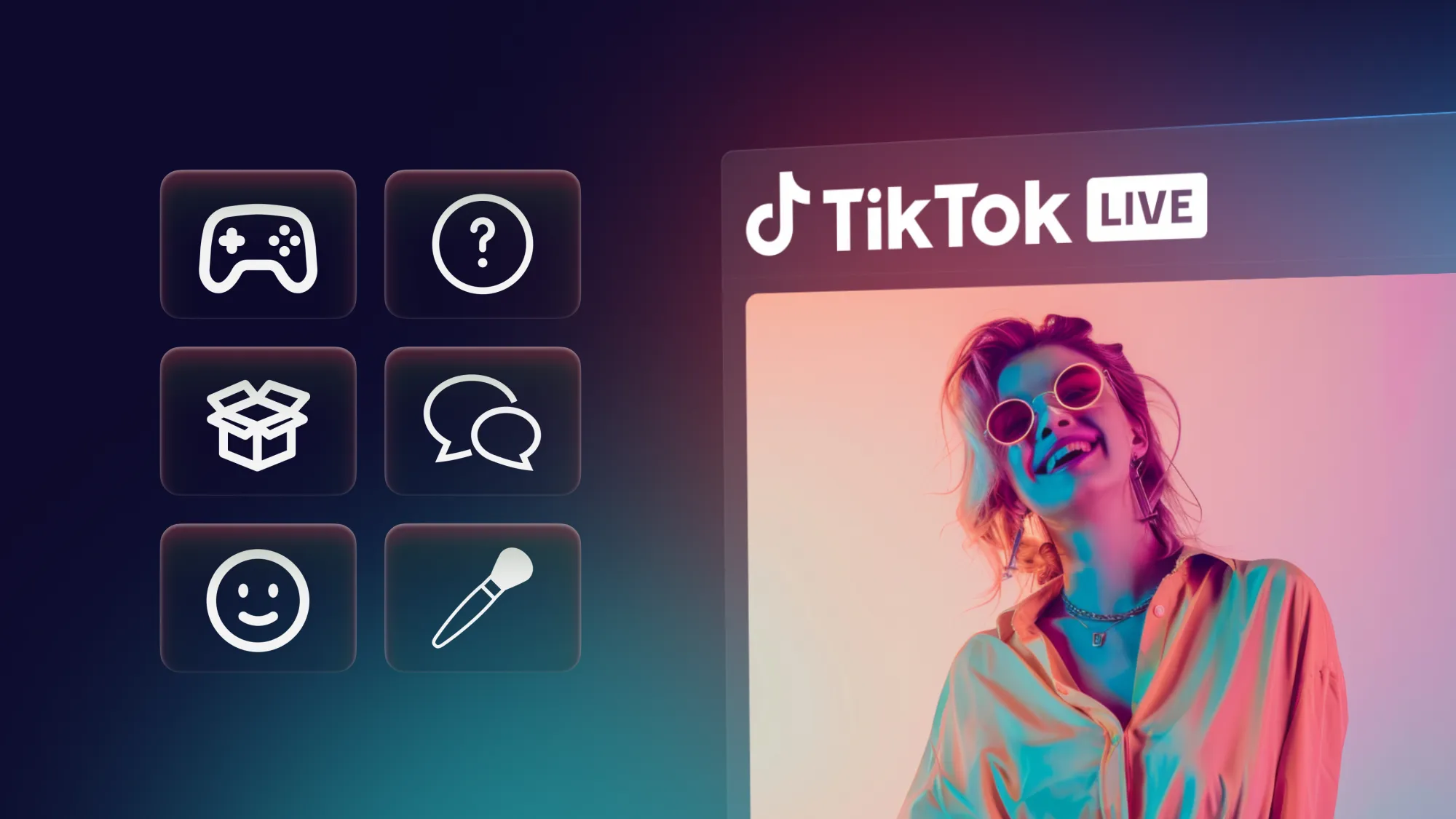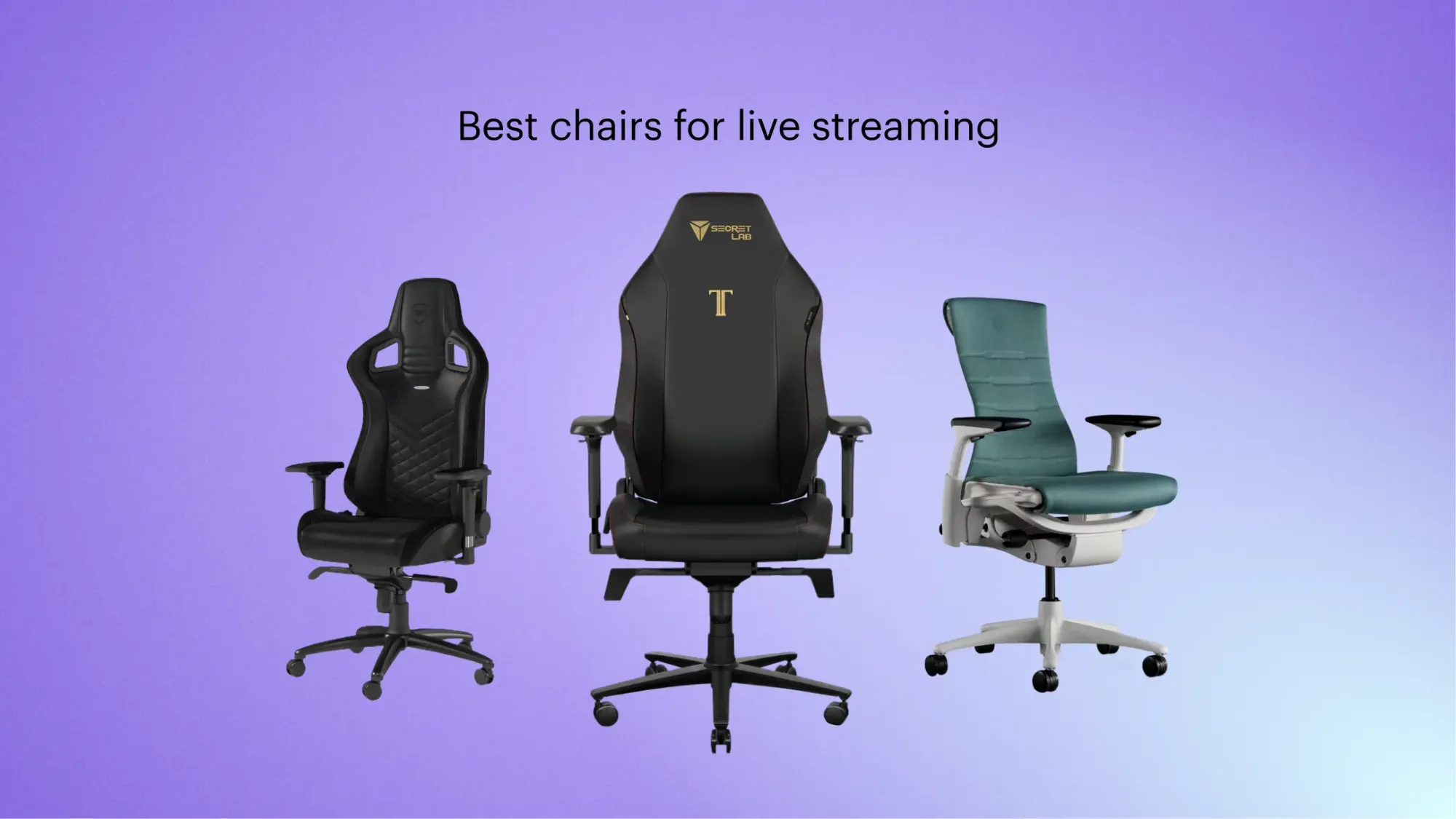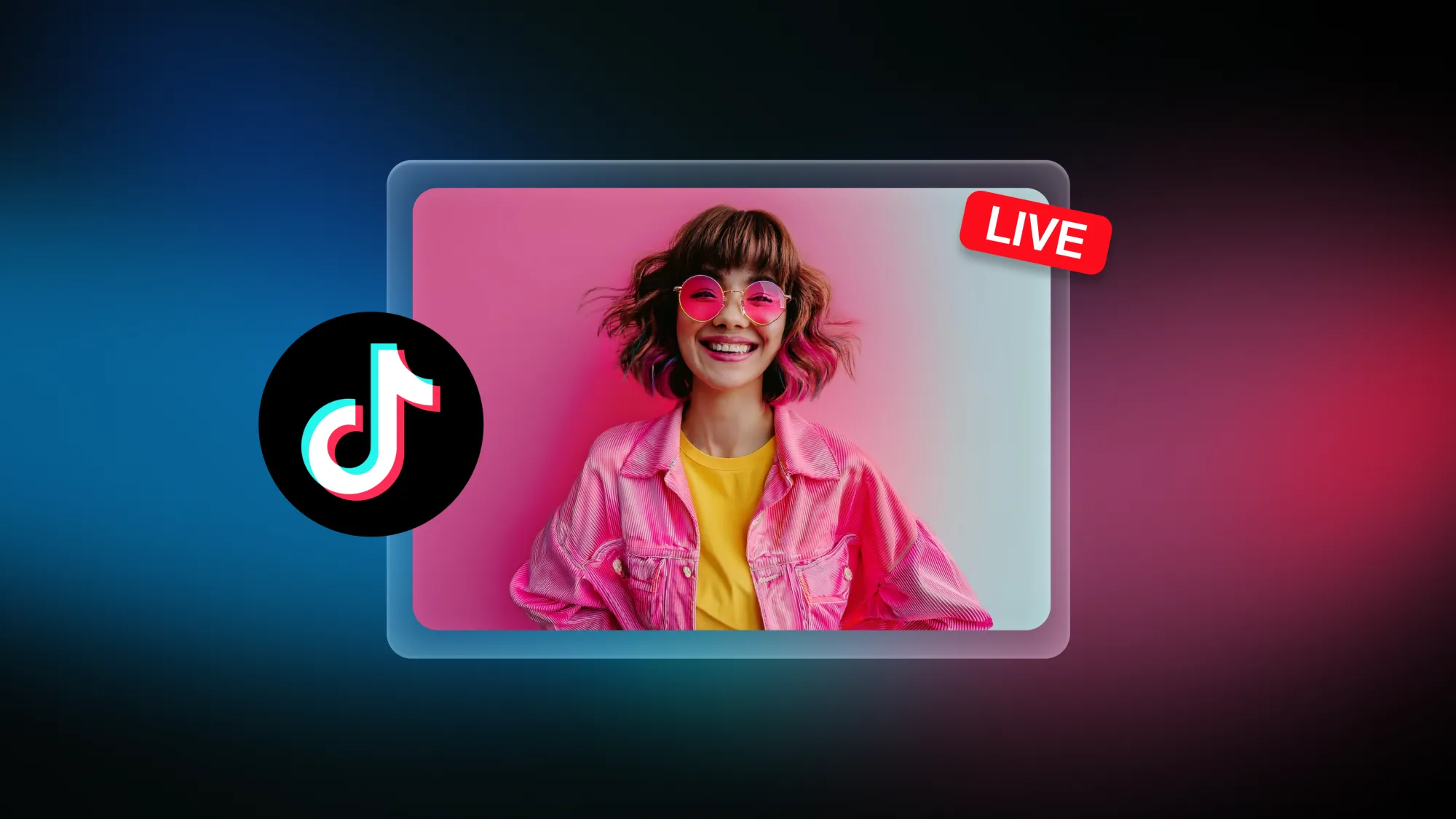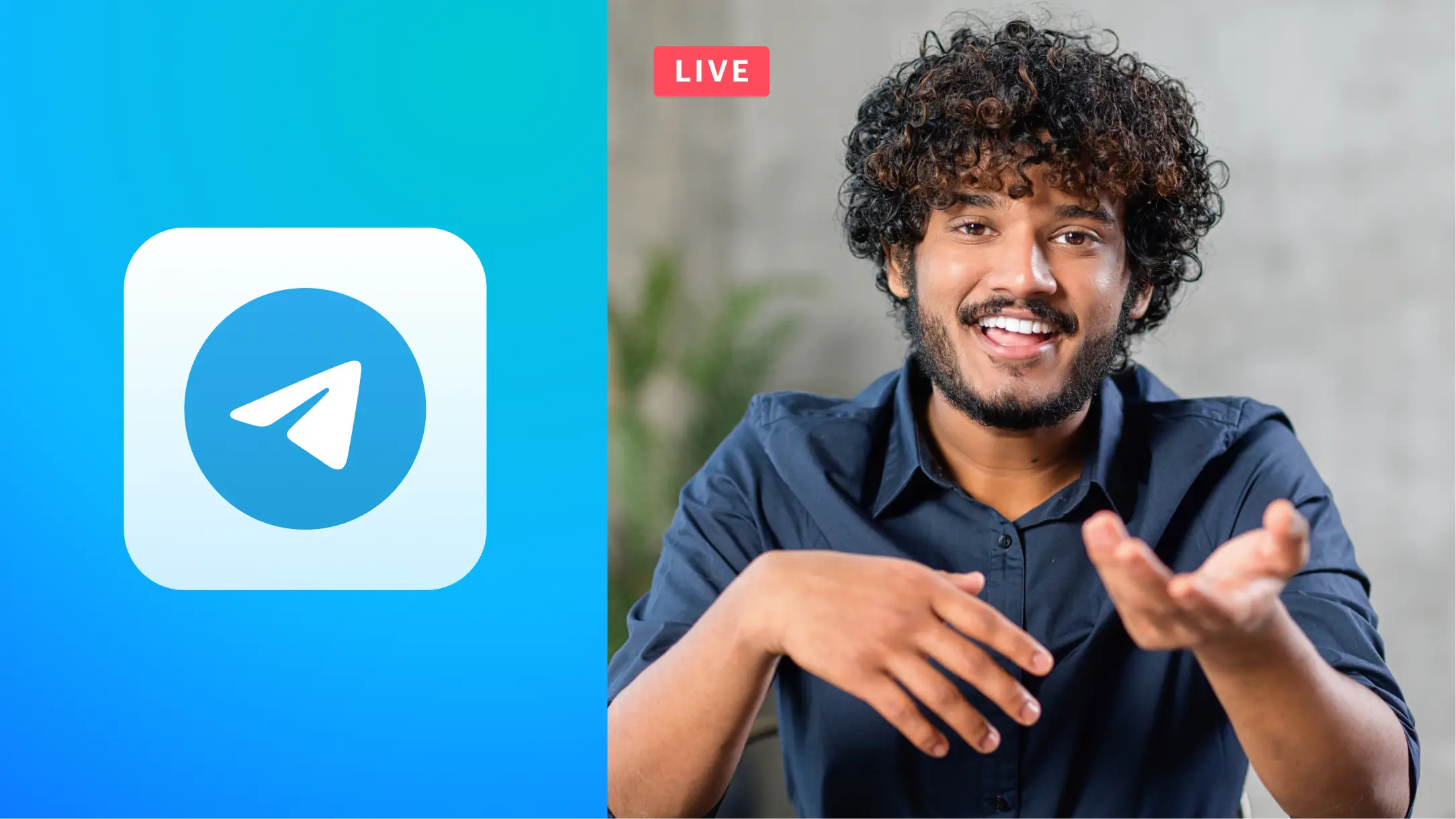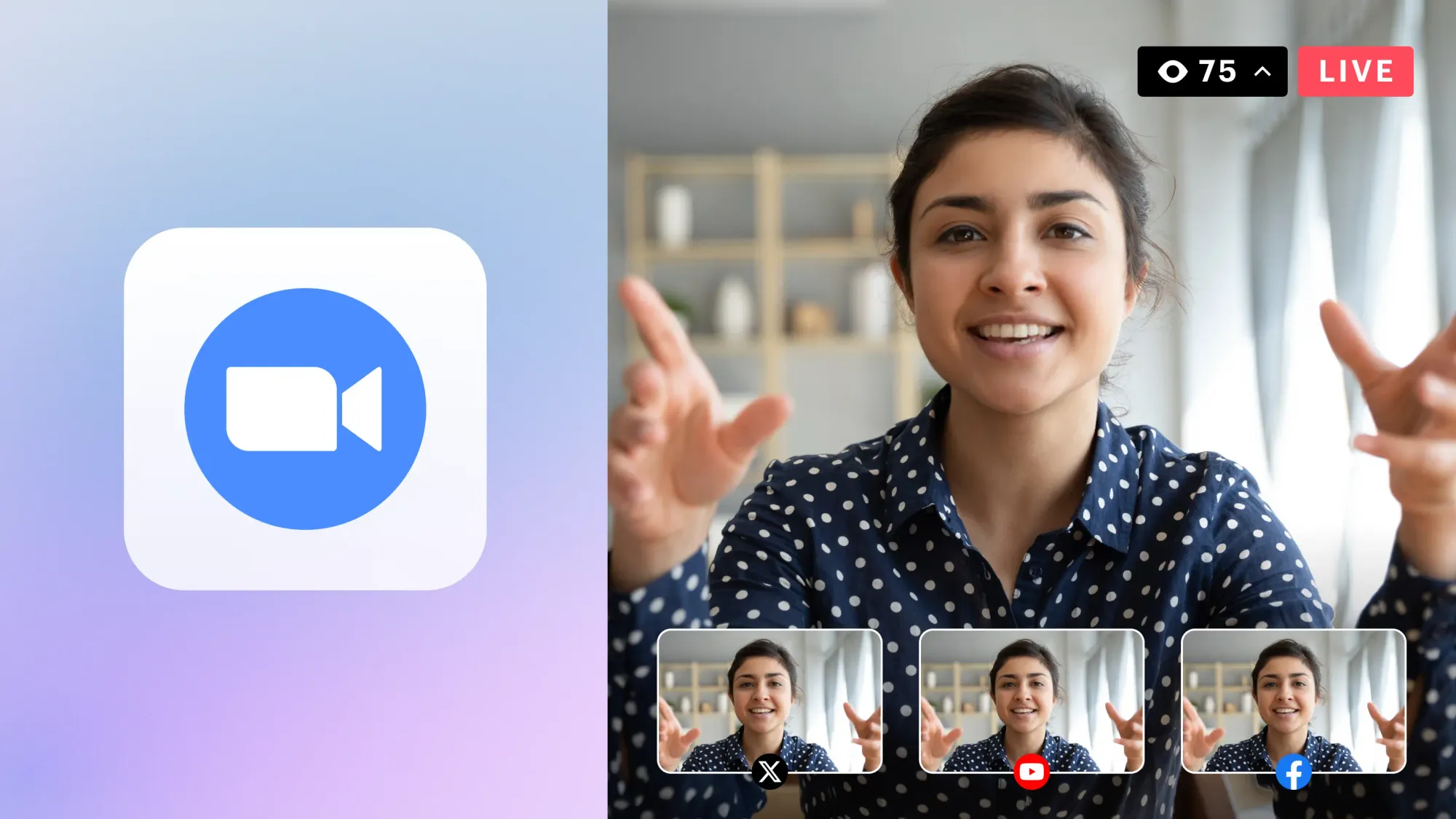Every part of your streaming setup is vital, so it’s hard to say which is the most important. But your encoder is pretty essential — you can’t go live without a way to encode your stream. Let’s get better acquainted with the heart of the streaming setup so you can choose the best encoder for your live stream.
What is a video encoder?
An encoder takes raw analog or digital video and compresses it into a suitable format for broadcasting. You cannot send your camera footage directly to a YouTube live stream because it has to be encoded first.
When you use apps to stream, — like going live on your Facebook profile — the app takes care of the encoding for you. But when you stream from your laptop or desktop computer, you need another solution for encoding. For most live streaming platforms, you need to convert the video signal into the H.264 format, an industry standard for video compression.
There are two types of encoders you can use to live stream:
- Software encoders: Encoding programs that you install and run on your computer. Software encoders capture and compress your stream input and deliver it to an end platform like Facebook, Twitch or YouTube.
- Hardware encoders: Physical equipment designed to encode live video signals. Some, but not all, hardware encoders connect directly to a camera.
The encoder is like the video translator for your streaming setup, which is why it’s important. Take it out of the equation and video streaming platforms would have a hard time understanding and reproducing the data you’re sending them.
Hardware vs. software encoding
So which is better, a software encoder or a hardware encoder? An encoder includes an algorithm and the hardware needed to run it too. In some sense, hardware encoders are very similar to their software counterparts: By the time you’re using them in your setup, they’ll both be just algorithms and hardware. But that’s the end of their similarities. They’re different in fundamental ways, and each comes with its own set of pros and cons.
What are the pros and cons of hardware encoders?
Hardware encoders pack all you need in a neat little box. They have a powerful processing unit whose sole job is to run the aforementioned encoding algorithm. Most hardware encoders have an interface to choose between options. For example, you can pick the encoding codec or the destination of the stream on your encoder.
Here are some benefits of a hardware encoder:
- Great performance, especially when you need high-quality or UHD streaming.
- Robust reliability, given that they’re built with one purpose — to encode.
- Higher encoding speed, leading to lower latency and less stream delay.
Hardware encoders do have their downsides, though, including:
- Cost, which starts at a couple hundred dollars and only increases from there.
- Functional limits, meaning you’ll have to get additional gear for other streaming actions like video switching.
- Upgrade difficulties, especially compared to software encoders. Like we said, hardware encoders do one thing very well, and that’s it. The good ones encode incredibly quickly, but at the cost of an arm and a leg. But if you can justify the investment, you probably won’t look back. Be ready to make additional investments, though, because hardware encoders are a one-trick pony.
What are the pros and cons of software encoders?
Software encoders don’t come with their own hardware. They rely entirely on your computer’s CPU for processing power. That can pose some problems, as encoding software can use up lots of PC resources. Still, many streamers use software encoders for the benefits they offer.
The key traits that make software encoders so popular are:
- Affordability, because even top-of-the-line encoding software doesn’t cost extra.
- Flexibility, as they can handle multiple input feeds and act as switchers, provide effects and more.
- Customizability, as they let you change the bitrate, adjust the encoding type and more.
It’s not all gravy with software encoders, though, because of their:
- High dependence on the host, since they’re only as good as the computer running them.
- Higher latency, thanks to the slower encoding.
- Overall lower performance, especially for lower-end setups or while you’re multitasking.
Like their hardware counterparts, software encoders have their flaws. But the good ones are incredibly cost-effective and offer a myriad of creative customization options. Still, a high-end software encoder likely won’t beat a high-end hardware encoder when it comes to performance and latency.
Should I use software or hardware encoding for my live stream?
What you want and what you need are two completely different things. You should keep this in mind when buying gear for your stream setup. Your goal is to get the best possible options within your budget — and that often means making compromises.
To start, you should always buy the gear that meets your needs. Regular streams usually don’t match the quality of a professional broadcast, and that’s perfectly fine.
Affordability is the major factor that will influence your decision. Hardware encoders are expensive, and you’ll need other gear to account for what they can’t do on their own. But high-end software encoders can be expensive too. Often enough, you’ll need either a powerful PC or a dedicated streaming computer just to run them.
Still, a good software encoder and a decent computer goes a long way in the streaming world. Using a software encoder could save you money that could go towards a good microphone, camera, or better internet connection.
So unless you’re a professional broadcaster or big-time streamer, a software encoder should help you stream successfully for a while. It’s cheaper, more accessible, and easier to use — a clear winner in most situations.
Popular software and hardware encoders
Here are popular video encoding and streaming software choices among streamers:
- OBS Studio: This free, open-source encoding software is a top choice for streamers of all kinds with a resourceful community to help you master OBS.
- XSplit: Professional streamers of all kinds use XSplit for capturing gameplay, streaming presentations, and hosting live events.
- vMix: vMix is a live streaming software for Windows users. You can add more video input options with the upgraded version too.
- Streamlabs: Streamlabs is a more user-friendly version of OBS, geared toward newer streamers.
- Restream Studio: Restream Studio is an all-in-one cloud-based streaming solution. No downloads are required to use it.
On the other hand, popular hardware encoders include:
- Teradek: Teradek encoders are great for on-the-go streaming and video production, especially the VidiU Go.
- NVIDIA-based graphics cards: Many NVIDIA graphics cards act as encoders while you’re streaming. This can help free up resources on your computer.
- ATEM Mini Pro: The ATEM Mini Pro is technically a video switcher, but it can also encode too.
- Niagara Video encoders: Niagara encoders also transcode video and have different models for podcasting, event broadcasting and video streaming.
- TriCaster encoders: There are several TriCaster video encoders with different capabilities from small, at-home streams to large video productions.
Cloud-based live streaming with Restream Studio
Hardware encoders are powerful but pricey and limited in functionality. Software encoders are cheap and intuitive but slower and taxing on your CPU. That’s why Restream offers streamers a third-option: cloud-based live streaming solutions.
Live streaming web apps like Restream Studio encode video via the cloud, and you can run your entire broadcast from a web browser. This takes a huge load off of your computer’s resources while maintaining a seamless broadcast for your audience. All you need to get started with Restream is a webcam, microphone, streaming device and internet connection.
Restream Studio is built with ease of use in mind while still having a ton of features to make your stream more professional, including:
- Drafts, the all-in-one tool to create and save setups for your next stream
- Accurate captions, enthralling graphics and sleek overlays
- Split-screen and custom RTMP streaming
- Dozens of integrations, from Zoom to TikTok Live and more
- Screen sharing capabilities for slides and presentations
- Support for remote guest speakers
- Copyright-free background music
- Custom backgrounds and logos
- Chat overlay that works with multiple platforms
- Multistreaming to eight destinations at once
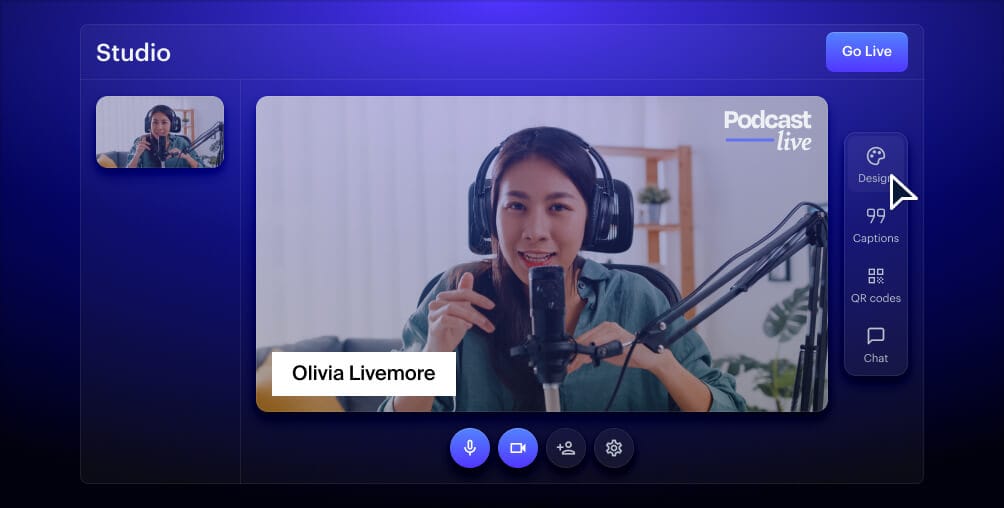
Create stunning live videos
Restream Studio is the easiest way to create high-quality live videos on multiple platforms at once. It's user-friendly and offers an engaging viewer experience.
Software vs hardware encoders: stream types
- Casual home streaming: If you go live every now and then from a home office or bedroom, you’ll do well with a setup that requires fewer resources. One mic, one camera, basic lighting and a free software encoder like OBS Studio should do the trick.
- IRL streaming: If you’re streaming on the go, your best bet is either a portable hardware encoder or streaming with the app you want to go live on.
- Streaming a full-scale virtual broadcast: If you are streaming a virtual event, you’ll need professional-quality video and reliable equipment, making a hardware encoder the safer option. You’ll need some technical expertise and a bigger budget to integrate the encoder, but it’s well worth it.
- Streaming classes or webinars: If you’re presenting slides, pre-recorded videos, or other media, a software encoder will suffice. Your computer won’t need as many resources to run a slideshow compared to a video game. That’s why encoding with your computer works well, especially with a paid software encoder for a more professional broadcast. However, you might consider a hardware encoder if you’re showcasing resource-heavy programs like video editing or illustration software.
- Live product launches: Broadcasting the launch of your new product live can help drum up excitement for it. The encoder type and stream setup you use depends heavily on your launch plans: product reveals can take many forms. Generally, the more cameras and people involved in your launch stream, the more likely you’ll need a hardware encoder.
- Streaming a podcast or interview: Podcasts and interviews often have pretty pared-down setups, so you can get away with a software encoder. But consider investing in a paid encoder for easier use and top-notch quality.
How to successfully live stream with a software encoder
With your choice of encoder, we’ll turn to the next big step: integrating the encoder into your setup and connecting it all for a successful stream. No pressure.
Here’s how you’d do it with the popular software OBS Studio:
- Set up audio and video sources. Place the cameras and the microphones where you want them for the stream and connect them to your capture card.
- Add the audio and video in OBS Studio. Set up audio in Options, and add visual sources from the Sources menu.
- Configure the live stream. Configure settings such as the bitrate, and create different scenes for smoother switching later. Restream’s Drafts feature does this excellently too.
- Connect the platforms. OBS Studio connects to one platform at a time, and you’ll need to find the stream key to do it.
- Test your live stream. Check if everything looks good in the preview, or set your stream to private if your platform allows it and watch from another computer.
If you want to reach an even wider audience with your live streams using a virtual encoder like OBS, use a multistream tool like Restream. Right off the bat, it helps you with:
- Growing your audience, thanks to native support for over 30 platforms and a solution for platforms that aren’t supported natively.
- Simplifying your setup, because it can hold the URLs and stream keys for every platform you use.
- Learning quickly with ease, so you’ll be able to set everything up and deploy it within minutes of the initial registration.
- Staying within your budget, because you can start for free and pay later as you need advanced features. Plus, Restream works on both Mac and Windows!.
The success of a live stream comes down to your content quality, both in terms of what it is (the content) and how you present it (the technical side). Work hard to develop good content ideas, but always remember to do a technical check before going live. Elevate your live channel’s visibility by multistreaming with Restream.
FAQs
How do software versus hardware encoders compare for streaming?
One isn’t better than another; both hardware and software encoders have pros and cons. As we mentioned, the best choice depends on what you’re using it for and the type of stream you’re broadcasting. Typically, a stream that’s more involved with multiple visual and audio sources is better off with a hardware encoder. It can handle the pressure of multiple inputs with less lag, and it won’t tank your PC’s performance. But a stream with only a few sources that doesn’t require ultra HD quality works well with a software encoder.
Can you live stream without an encoder?
You cannot live stream to most platforms without a video encoder. The only way around this is to use the live feature within apps like Facebook or X (Twitter). But this method limits you significantly on many fronts, and you can’t multistream to several platforms at once. You’re better off looking for an encoding solution instead.
What does an encoder do for live streaming?
An encoder takes your raw video footage and compresses it into a digital format that’s acceptable for end platforms like Twitch, Facebook and YouTube. An encoder is pretty much a must-have for most live streaming setups.
Does hardware encoding affect video quality?
The encoder you use, whether hardware or software, will impact the performance and quality of your stream. If you want to stream at a higher resolution and frame rate, you need a powerful encoder, and video encoding hardware will help keep your video quality consistent. Hardware encoding can benefit your stream quality by taking some of the load off your computer and providing the power required for a high-quality stream.
Conclusion
For most people who are new to live streaming, software encoders are a better choice than hardware encoders. They provide an accessible entry point that won’t be difficult to set up or hurt your streaming budget.
As your production budget gets bigger along with your audience, you can get a hardware encoder for higher-quality streams. You can also combine hardware and software encoders for a hybrid setup! Whatever encoder you pick, use it with Restream to push your broadcast to multiple platforms at once. That way, you’ll double or even triple your audience in no time, regardless of how you encode your stream.

